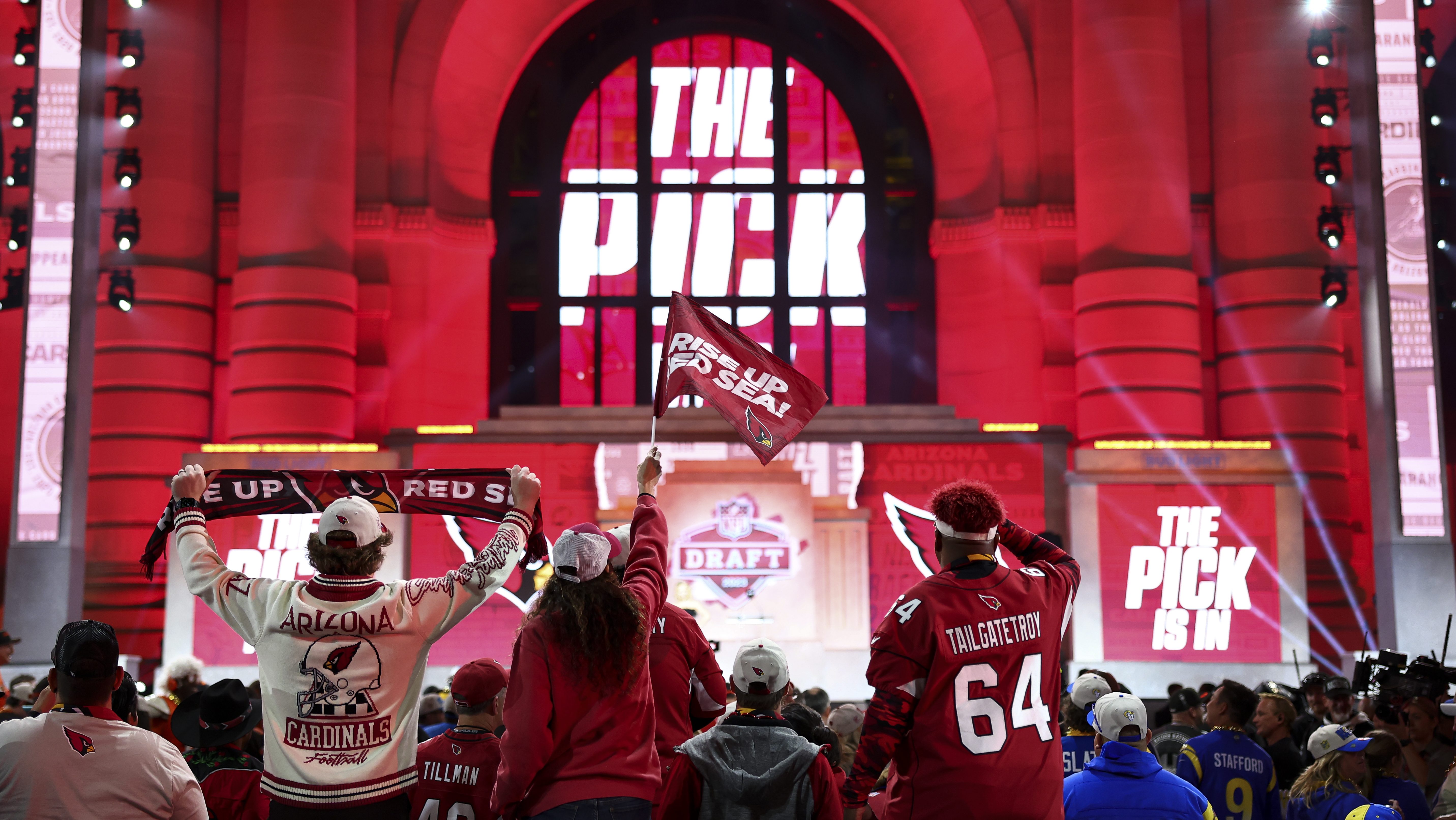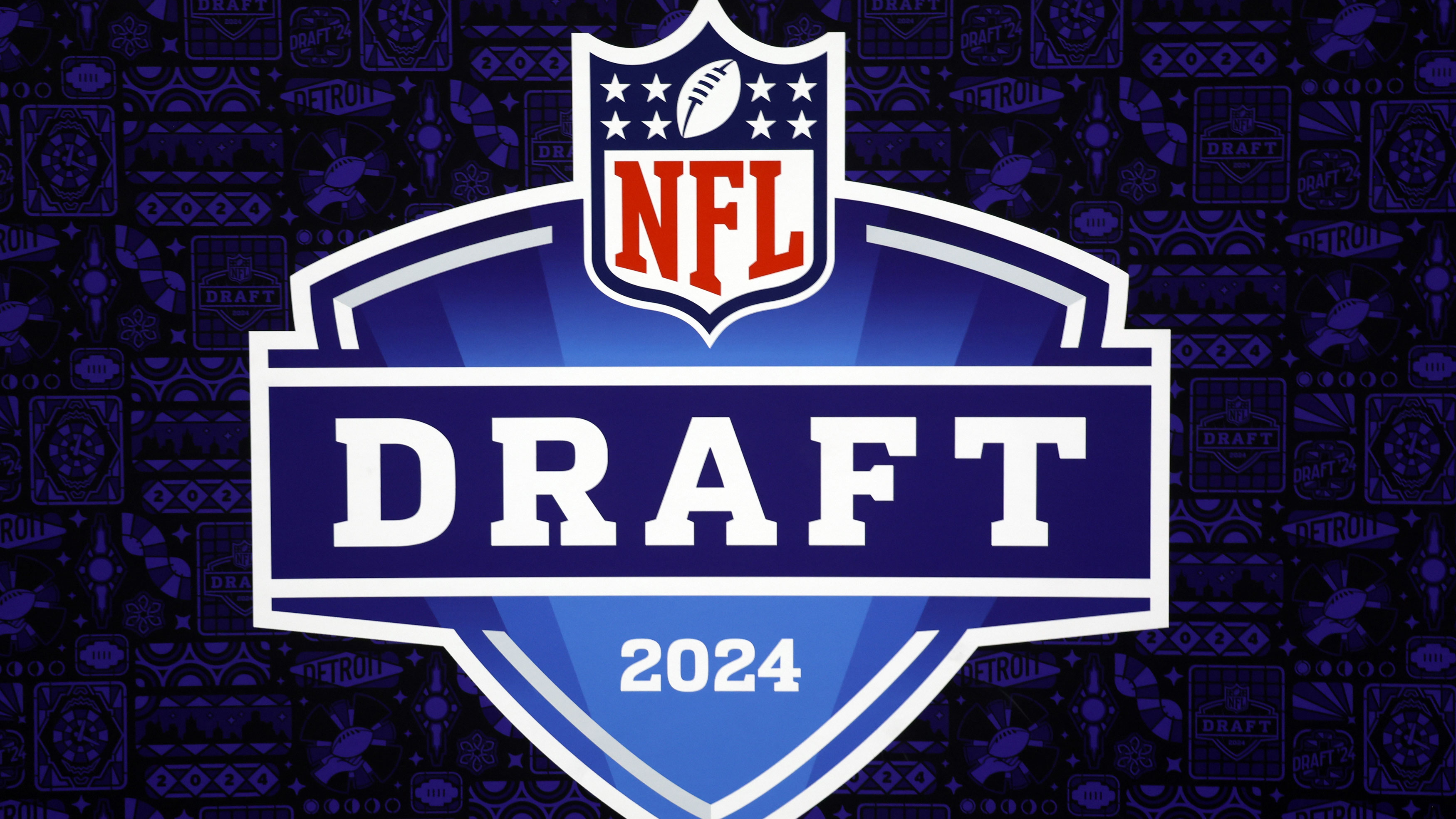A new crop of quarterbacks enters the NFL every year.
Sometimes, the fresh faces burst onto the scene and make an immediate impact in the league. Other times, the lights are too bright and the entire class flames out.
With the 2024 NFL Draft just around the corner, Caleb Williams, Drake Maye, Jayden Daniels and J.J. McCarthy hope to join the former group rather than the latter.
Before the action begins in Detroit, here’s a look at the three best and three worst NFL draft classes of the last 50 years:
Get top local stories in Southern California delivered to you every morning. Sign up for NBC LA's News Headlines newsletter.
Best: 1983
Notable picks: John Elway (No. 1), Jim Kelly (No. 14), Tony Eason (No. 15), Ken O’Brien (No. 24), Dan Marino (No. 27)
As the only class (so far) with three Pro Football Hall of Fame quarterbacks, 1983 certainly reigns supreme.
Elway was drafted by the Baltimore Colts before forcing a trade to the Denver Broncos, where he won two Super Bowls and 1987 MVP. Kelly nearly pulled a similar move, but he joined the Buffalo Bills in 1985 after two seasons in the USFL. He led the squad to four consecutive Super Bowl appearances, all losses, before being inducted into the Hall of Fame in 2002. Marino, the third Hall of Fame QB, dropped in the first round but became a nine-time Pro Bowler and the winningest QB without a Super Bowl win.
Eason and O’Brien are the forgotten first-rounders from this class, but both had respectable pro careers. Eason, drafted by the New England Patriots, started 51 games over eight seasons and finished sixth in MVP voting in 1986. O’Brien made 110 starts and two Pro Bowls after being selected by the New York Jets.
Worst: 2007
Notable picks: JaMarcus Russell (No. 1), Brady Quinn (No. 22), Kevin Kolb (No. 36), John Beck (No. 40), Drew Stanton (No. 43), Trent Edwards (No. 92), Matt Moore (undrafted)
It’s probably not a good sign when the best quarterback from a class ended up being undrafted.
Moore made just 32 career starts, with 49 touchdowns and 36 interceptions, and it’s pretty clear he was the star of this group. Russell was one of the biggest busts in NFL history, playing three seasons with the Oakland Raiders before he was out of the league. Quinn never reached his college heights after the Cleveland Browns selected him later in the first round.
Early in the second round, Kolb and Stanton had a few moments as fill-in starters, but neither saw much action. Edwards, a third-rounder, similarly got an opportunity for the Buffalo Bills early in his career but couldn’t figure it out.
Best: 2004
Notable picks: Eli Manning (No. 1), Philip Rivers (No. 4), Ben Roethlisberger (No. 11), J.P. Losman (No. 22), Matt Schaub (No. 90)
This group could soon join 1983 with three Hall of Fame quarterbacks.
The two classes had similar stories at the top, where Manning refused to play for the San Diego Chargers and was shipped to the New York Giants for Rivers. Both had solid careers in their respective homes – Manning winning two Super Bowls, Rivers posting overall better statistics. Roethlisberger was probably the best of the trio, winning two Super Bowls and totaling the most passing yards of the three.
Losman never made much of an impact after the Bills drafted him, making 33 career starts with 33 touchdowns and 34 interceptions. Schaub was an underrated fourth quarterback from this class, starting for seven seasons with the Houston Texans and making two Pro Bowls after beginning his career as Michael Vick’s backup.
Worst: 1996
Notable picks: Tony Banks (No. 42), Bobby Hoying (No. 85), Jeff Lewis (No. 100), Danny Kanell (No. 130), Damon Huard (undrafted)
There isn’t much to praise with this group.
Banks had the best numbers, but his career was defined by being the guy before the guy. He started for three seasons with the St. Louis Rams before he was replaced by Kurt Warner, who quickly led them to a Super Bowl. Then he started for a season and a half with the Baltimore Ravens before being replaced by Trent Dilfer, who went on to win the Super Bowl.
Beyond Banks, no one in this class started more than 27 games. Huard, undrafted out of Washington, was in the league for 12 seasons, mostly as a backup. Kannel started 10 games for the Giants in 1997 and 1998, but that was the extent of his NFL career.
Best: 2012
Notable picks: Andrew Luck (No. 1), Robert Griffin III (No. 2), Ryan Tannehill (No. 8), Brock Osweiler (No. 57), Russell Wilson (No. 75), Nick Foles (No. 88), Kirk Cousins (No. 102)
Even with Luck and Griffin’s injuries, this group has sneaky depth.
Luck was a four-time Pro Bowler, retiring at the peak of his powers after just seven seasons due to injuries. RG3 was the Offensive Rookie of the Year, got hurt in the postseason for Washington and was never the same. But even with those unfortunate stories for the top two picks, there were plenty of success stories later on.
Tannehill developed into a capable, longtime NFL starter with the Dolphins and Titans. Osweiler earned a big contract after respectably filling in for Peyton Manning, though he flamed out soon after. Wilson has had the best career of any 2012 quarterback, winning a Super Bowl and making the Pro Bowl nine times so far. Foles had a few solid seasons as a starter and will forever be remembered for his Super Bowl MVP run with the Philadelphia Eagles. Then there’s Cousins, who continues to produce into his mid-30s as a four-time Pro Bowler.
Worst: 2013
Notable picks: EJ Manuel (No. 16), Geno Smith (No. 39), Mike Glennon (No. 73), Matt Barkley (No. 98), Landry Jones (No. 115)
One year after a great quarterback class, one of the worst showed up.
Smith is fighting to salvage this group. He finally got another chance as a starter in 2022 after a rocky start to his career with the Jets, responding with a Pro Bowl season for the Seahawks before earning a big contract.
Glennon is the only other player with more than 20 starts, but he has a 6-25 career record while playing for seven different teams. Manuel got a chance to play for the Bills as a rookie, quickly proving that he wasn’t a starting QB. Barkley is still bouncing around as a backup, though he’s only made seven starts in his 10-year career.
Sleeper: 2020
Notable picks: Joe Burrow (No. 1), Tua Tagovailoa (No. 5), Justin Herbert (No. 6), Jordan Love (No. 26), Jalen Hurts (No. 53)
If the first four seasons of this class’s career is any indication, it could soon be one of the best ever.
Burrow made the Super Bowl in just his second season, quickly turning around a Bengals franchise that hadn’t seen that kind of success in decades. When healthy, Tagovailoa posted above-average numbers in 2022 and 2023 for the Dolphins. Just behind him at No. 6, Herbert was Offensive Rookie of the Year in 2020, a Pro Bowler in 2021 and top-10 in MVP voting in 2022.
Later in the draft, Hurts quickly became a star. He had a breakout season for the Eagles in 2022, leading Philly to the Super Bowl and posting historic numbers in a close loss. Love got his first crack at starting in 2023 when the Packers traded Aaron Rodgers, and he helped the team win a playoff game after tossing 32 touchdowns in the regular season.
Editor's note: An earlier version of this story was first published in April 2023.



